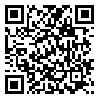BibTeX | RIS | EndNote | Medlars | ProCite | Reference Manager | RefWorks
Send citation to:
URL: http://ijhe.tums.ac.ir/article-1-175-en.html
Background and Objectives:
In many countries, there is a popular belief that the simultaneoushandling of food and money contributes to the incidence of food-related public health incidents.
The objective of this study was to determine the total bacterial count and the presence of food borne
bacterial pathogens on Iranian currency notes, collected from food-related shops.
Materials and Methods: A total of 120 Iranian currency notes, comprising notes in four denomination (2000, 5000, 10000 and 20000 R) were collected from various food-related shops including, butchery, bakery, confectionary, fast food, ice cream and poultry meat shop. The currency notes were categorized into three groups according to their physical conditions. All currency notes were examined for total bacterial count, Escherichia coli, Staphylococcus aureus, Bacillus cereus, Salmonella and Listeria according to the standard techniques.
Results: The average number of total bacterial count in four denomination of currency notes (2000, 5000, 10000 and 20000 R) were 118.49, 106.32, 69.44 and 220.81 CFU/cm2, respectively. The association between total bacterial count and denomination of the currency was not statistically significant. Of the 120 currency notes on which bacteriological analysis was conducted 13.3 %, 32.5% and 10.8 % were contaminated with E. coli, S. aureus and B. cereus, respectively. Salmonella and Listeria were not isolated from samples. Currency notes collected from butchery, bakery, confectionary, fast food, ice cream and poultry meat shop were contaminated with E. coli at the rate of 60, 0, 5, 5, 0 and 10 % with S. aureus at the rate of 55, 30, 10, 25, 40 and 35 % with B. cereus at the rate of 0, 10, 20, 5, 20 and 10 %, respectively. There was not a statistically significant association between physical condition and bacterial contamination of the currency notes. The effect of presence or absence of cashier in food-related shops on bacterial contamination of the currency notes was also evaluated.
Conclusion: Money has got the potential to change through many different hands and could be exposed to many different environments at a relatively high frequency. Since there is very little information regarding the hygienic history of any forms of currency, great care should be taken when the same person facilitates the handling of money and the preparation and handling of food to avoid cross contamination.
Received: 2008/11/23 | Accepted: 2009/01/10 | Published: 2009/04/4
| Rights and Permissions | |
 |
This work is licensed under a Creative Commons Attribution-NonCommercial 4.0 International License. |





